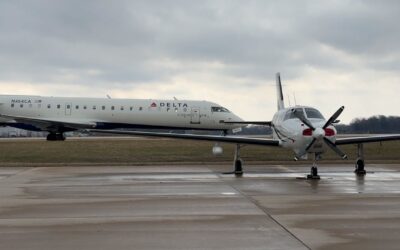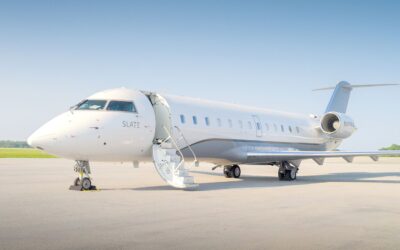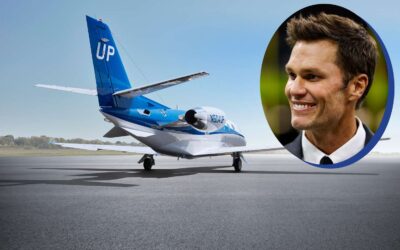For members of Boeing’s executive board, traveling on the company’s corporate jets has long been a prized perk of the job.
The 19 senior leaders have relied on five company-owned Bombardier Challenger 650 business jets and two customized 737 narrowbody jets to help oversee the U.S. planemaker’s expanding operations. Boeing requires its CEO to avoid commercial flights for safety reasons, even on personal trips.
Then, in mid-September, new CEO Kelly Ortberg grounded much of the corporate fleet in an early cost-cutting move. Instead, executives were told to fly economy class on scheduled airline flights.
At the time, a strike had paralyzed Boeing’s commercial manufacturing and the company was in urgent need of cash. The flight restrictions, combined with furloughs and layoffs, sent a message of frugality as Ortberg worked with bankers to raise $24 billion to finance his comeback.
“To some extent, I think he was trying to get people’s attention,” said George Ferguson, an analyst at Bloomberg Intelligence. “It’s trying to show some of the shared sacrifice.”
The savings wouldn’t make a difference for a company with $58 billion in debt, said aviation consultant Brian Foley, who estimates Boeing spends about $15 million a year ferrying its executives around. But at a time when the company was cash-strapped and factory workers were openly rebelling over what they saw as paltry wages, the move sent a clear message from the new boss.
Boeing’s executive fleet operated just 29 flights in October, an 85% decline from a year earlier, according to a Bloomberg analysis of flight data compiled by Flightradar24. That’s down from 56 in September and 146 in August, when Ortberg joined Boeing as CEO with a mandate to turn around the troubled plane maker.
While Boeing is beginning to ease its crackdown on travel, the tactics provide a glimpse into the new CEO’s priorities and management ethos. Boeing cut spending on everything from advertising to consultants and catering in September as financial pressure from the seven-week strike intensified.
It’s a theme Ortberg has repeated during his brief tenure.
“We need to reset priorities and create a more agile and focused organization,” he said on an Oct. 23 conference call.
Ortberg is taking steps to permanently cut Boeing costs, eliminating 17,000 jobs including management and drawing up a list of non-core businesses to potentially sell or close.
“The number of employees was clearly inflated and so was the cost structure,” said Sheila Kahyaoglu, an analyst at Jefferies. She estimates Boeing could raise up to $12 billion by shedding assets such as its Jeppesen and ForeFlight navigation businesses.
Boeing, which declined to comment for this article, canceled its annual rooftop soirée for the Singapore Grand Prix in September, typically a lavish event near the Formula 1 race track. In previous years, the company offered a generous spread catering, drinks and complimentary tickets for guests.
Boeing also canceled its long-standing sponsorship of the Washington International Horse Show in October and skipped China’s first commercial and defense air show in November. It was a no-show this month when Brunei hosted the annual meeting of Asian airlines.
Ortberg’s edict has restricted flights to Boeing’s main operations centers in Seattle (commercial aircraft manufacturing); Washington (corporate headquarters, defense arm); and Dallas (services unit).
The previous setup made it easy for senior executives to travel from afar. Former CEO Dave Calhoun flew from his homes in New Hampshire and South Carolina, and his senior leadership team was scattered in places like Connecticut and Toronto.
Flights have decreased to Charleston, South Carolina, and nearby Savannah, Georgia; White Plains, New York, near CFO Brian West’s Connecticut home; and Toronto, where IT director Susan Doniz is based.
Calhoun, West and Doniz declined to comment for the story, a Boeing spokesman said.
Although Ortberg, like his predecessors, must travel by private jet, he will travel to Seattle.
By Foley’s calculation, the company pays about $4,480 in total variable costs for every hour a Challenger 650 spends in flight, or about $1.5 million a year per plane. For every 737, hourly operating costs average about $9,685, or $3.7 million annually.
The estimates cover fixed costs such as crew salaries, insurance and the 50,000-square-foot hangar at Chicago Gary International Airport where the planes are located.
In total, Boeing has interests in 22 commercial aircraft, turboprops and helicopters that also support flight testing and engineering. The total includes fractional stakes in two Challenger 650s operated by NetJets, according to data provider Amstat.
With Ortberg looking to rationalize, Boeing will likely eventually consider shedding some of these planes, Foley said, and rely more on fractional stakes if executive flying is permanently reduced.
“With a person like Kelly who chose to be based in Seattle, there may be less reason to go coast to coast if Zoom goes dark,” he said.









